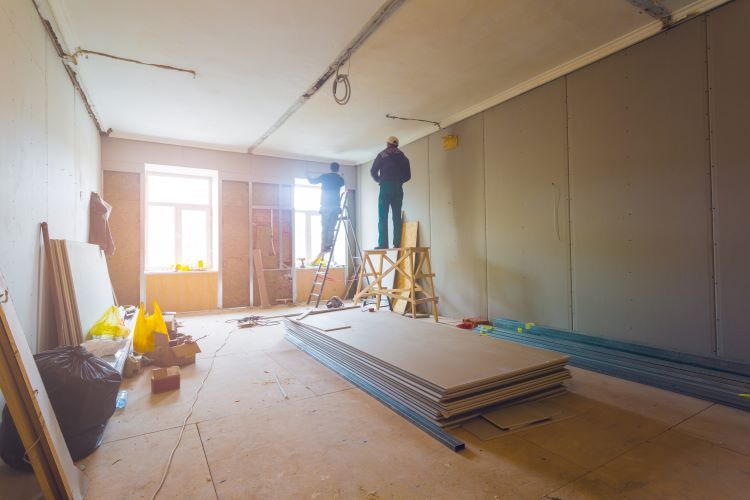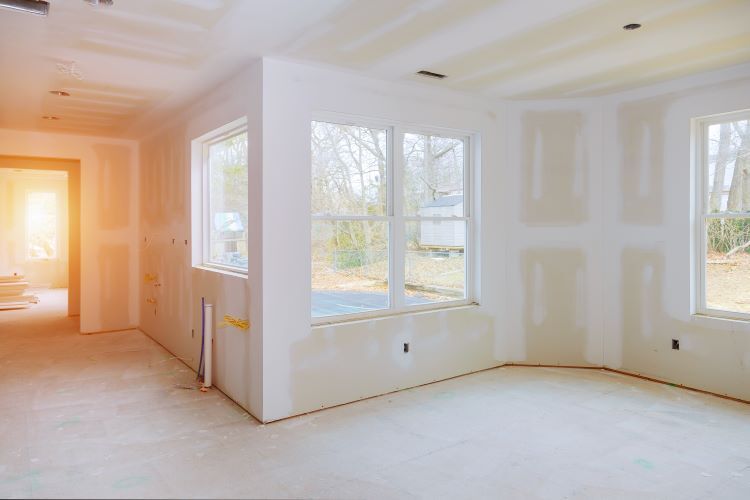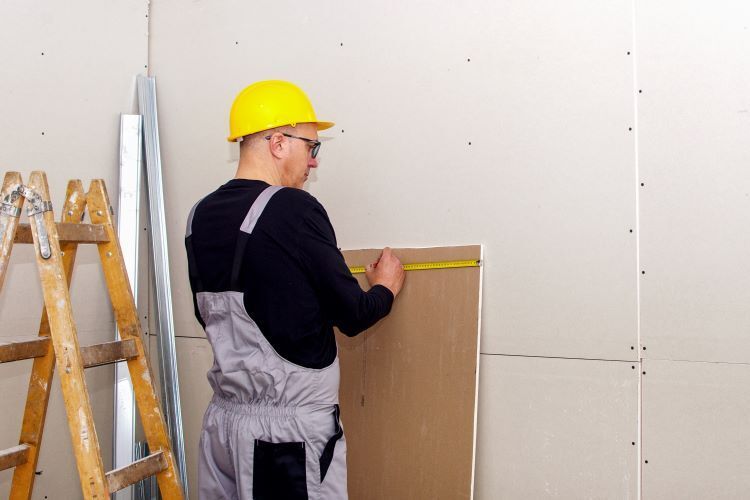Avoiding Common Mistakes in Drywall Installation

Drywall installation is a critical part of any construction or renovation project. When done correctly, it creates a smooth, durable surface that's ready for paint or other finishes. However, there are common mistakes that can compromise the quality and longevity of the drywall, leading to unnecessary repairs down the line. At Saskatoon Drywallers, we want to help you avoid these pitfalls. Here are some common drywall installation mistakes and how to avoid them.
1. Incorrect Measurement and Cutting
Mistake:
One of the most frequent errors in drywall installation is inaccurate measurement and cutting. This can lead to gaps, uneven edges, and wasted material.
Solution:
Always measure twice before cutting. Use a straight edge to guide your cuts and ensure that each piece fits snugly into place. It’s also essential to leave a small gap between the drywall and the floor to prevent moisture wicking from the floor, which can cause damage over time.
2. Improper Fastening
Mistake:
Overdriving screws or nails into the drywall can break the paper surface, weakening the hold and leading to popped nails or screws later on. Conversely, underdriving fasteners leaves the drywall unsecured.
Solution:
Use the correct drywall screws or nails and ensure they are driven just below the surface of the drywall without breaking the paper. A screw gun with an adjustable depth setting can help achieve the perfect depth every time. Remember to fasten screws about every 12 to 16 inches on the studs to secure the drywall properly.
3. Misaligned Seams
Mistake:
Poorly aligned seams between drywall sheets can create noticeable joints that are difficult to conceal with tape and mud. This is often due to rushing or improper planning during installation.
Solution:
Plan your drywall layout carefully, starting with the ceiling and working down the walls. Ensure that the seams between sheets fall on the studs, not between them. Stagger the seams so that they do not align with seams on adjacent walls or ceilings, which helps to strengthen the overall structure and makes finishing easier.
4. Inadequate Joint Taping
Mistake:
Applying too little or too much joint compound, or failing to embed the tape properly, can result in bubbles, loose tape, and visible seams.
Solution:
When applying joint compound, use a consistent, smooth technique. Lay down a thin layer of compound, then press the tape into the joint, ensuring it’s fully embedded. Apply additional layers of compound, feathering out the edges to create a smooth, even finish. Allow each layer to dry thoroughly before sanding and applying the next layer.
5. Insufficient Sanding
Mistake:
Rushing through the sanding process can leave bumps, ridges, or visible tape lines, which become glaringly obvious once the walls are painted.
Solution:
Take your time with sanding, and use a fine-grit sandpaper to smooth the surface evenly. It’s crucial to sand the edges of the joint compound until they blend seamlessly with the drywall surface. Use a bright light to inspect the surface for any imperfections before proceeding to priming and painting.
6. Skipping Primer
Mistake:
Some installers skip priming, especially when the drywall appears smooth after sanding. However, this can lead to uneven paint absorption and a blotchy finish.
Solution:
Always apply a quality drywall primer before painting. Primer helps seal the surface, ensuring that the paint adheres evenly and provides a consistent color. It also highlights any remaining imperfections that can be corrected before the final coat of paint.
7. Poor Corner Finishing
Mistake:
Corners can be tricky to finish properly. Mistakes here often include uneven application of compound or failure to reinforce the corner with proper materials, leading to cracks and a less-than-professional appearance.
Solution:
Use corner bead for outside corners to achieve a crisp, durable edge. For inside corners, apply joint compound to both sides and press in the tape, ensuring it’s centered in the corner. Smooth it out carefully with a drywall knife, and apply additional layers of compound as needed, sanding between coats.
8. Neglecting to Use Moisture-Resistant Drywall in Wet Areas
Mistake:
Using standard drywall in areas exposed to moisture, like bathrooms or basements, can lead to mold growth and structural issues.
Solution:
Always use moisture-resistant drywall, often referred to as "green board" or "blue board," in areas prone to humidity. For even more protection, consider using cement board behind tile in wet areas, such as showers or tub surrounds.
9. Ignoring Electrical Boxes and Fixtures
Mistake:
Cutting drywall without accounting for electrical boxes, light switches, and other fixtures can lead to uneven edges and gaps that are difficult to cover.
Solution:
Before installing drywall, carefully measure and mark the locations of all electrical boxes and fixtures. Use a drywall saw or rotary tool to cut precise openings. It’s also a good idea to leave a small gap around the edges of these openings to allow for any slight adjustments.
10. Failing to Account for Expansion and Contraction
Mistake:
In areas with significant temperature or humidity fluctuations, drywall can expand and contract, leading to cracks and joint separation if not properly installed.
Solution:
To accommodate for expansion and contraction, leave a small gap (about 1/8 inch) between sheets of drywall. This space can be filled with joint compound during finishing. Also, consider using flexible joint compound in areas prone to movement, such as around windows and doors.
Conclusion
Drywall installation is a skill that requires attention to detail, patience, and the right techniques. By avoiding these common mistakes, you can achieve a professional-looking finish that will stand the test of time. However, drywall installation can be challenging, especially for larger projects or areas with tricky layouts. If you're unsure about any aspect of the process, hiring a professional is the best way to ensure a flawless result.
At Saskatoon Drywallers, we pride ourselves on delivering top-quality drywall installation services. Whether you’re renovating a single room or finishing a new build, our experienced team is here to help. Contact us today to discuss your project and learn how we can assist you in achieving the perfect finish.
You might also like


